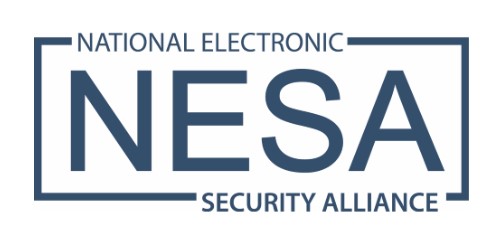
2.14.25 – Security – By Gregory Richter
Although the occurrence of a crisis on campus is rare, the first step to protect schools and personnel is to accept the fact that a crisis can and may occur — and to proactively prepare for the worst-case scenario. The unfortunate reality is that tragic events, such as school shootings or violent incidents, have become a part of national discourse. While security leaders cannot predict or prevent every crisis, they can take proactive steps to reduce risks, improve preparedness and respond effectively.
Building a threat management team (TMT) and implementing a comprehensive threat assessment strategy can be a game-changer in preventing violence on campus. By recognizing early signs of potential danger, fostering a culture of openness, and responding quickly and appropriately, schools can become safer environments for students, staff and faculty.
This article will explore key aspects of identifying and managing threats, particularly violent behaviors, on campus. It will also discuss the importance of a structured, multidisciplinary approach to crisis prevention and the building of a TMT.
Understanding the motivation behind violence
Before security leaders can address how to build a threat management team, it is crucial to understand the motivations that may drive dangerous individuals to commit violent acts, particularly in the context of violent aggressors and school shooters. Although each situation is unique, several factors commonly contribute to the escalation of violent behavior. Studies have shown that most aggressors are motivated by one or more of the following:
- Anger: Intense frustration or resentment, often directed at specific individuals, groups, or institutions.
- Frustration: The inability to cope with life’s challenges or perceived failures, which may create a sense of hopelessness or isolation.
- Revenge: A desire to retaliate against perceived wrongs, real or imagined.
- Living out a fantasy: Violent fantasies, often fueled by anger, frustration, or feelings of powerlessness, can sometimes turn into plans for real-world violence.
These factors are often compounded by additional influences such as violent media, violent video games, and sometimes untreated mental health conditions. Understanding these motivators is essential in recognizing and preventing potential threats before they escalate.
The role of a threat management team
A threat management team is an interdisciplinary group of professionals responsible for managing and addressing behaviors of concern. The team is typically composed of a variety of experts, including campus security personnel, mental health professionals, law enforcement, and legal advisors. The purpose of the team is to assess potential threats, intervene before situations escalate, and promote a culture of safety and respect.
A key advantage of an on-campus threat management team, made up of individuals already working within the campus community (such as faculty, staff, law enforcement or campus security), is their deep understanding of the campus’s social, academic, and physical environment. Furthermore, by utilizing internal personnel instead of outsourcing to external contractors or consultants, the institution can not only reduce costs but also enhance response times.
Key steps in building a threat management team:
- Choose multidisciplinary team members: The team should include individuals with expertise in different areas, such as law enforcement, mental health, student services, and campus police or security. This diversity of perspectives ensures a holistic approach to threat management.
- Define prohibited and concerning behaviors: Clearly outline what behaviors are considered threatening or concerning, and establish guidelines for how these behaviors should be reported and managed.
- Establish a central reporting system: Create a centralized system where students, staff, and faculty can report concerns about individuals who may pose a threat. This system should be accessible, confidential, and easy to use.
- Determine threshold for law enforcement intervention: The TMT should establish when it is appropriate to involve law enforcement. Not all threats warrant law enforcement action, but some situations may require immediate law enforcement involvement.
- Establish assessment procedures: Implement standardized procedures for assessing threats, including gathering information from various sources and evaluating the level of risk posed by an individual.
- Develop risk management options: Once a threat has been assessed, the team should develop strategies to manage the risk. This could include counseling, suspension, increased monitoring, or even legal action, depending on the severity of the threat.
- Create and promote a safe school climate: Foster an environment where students and staff feel comfortable reporting concerns without fear of retaliation. A culture of respect, trust, and emotional support can prevent many issues from escalating into crises.
- Provide training for all stakeholders: It is crucial that all members of the campus community — faculty, staff, students, and security personnel — receive training on recognizing warning signs and responding appropriately to threats.
The behavioral threat assessment process is focused on identifying early warning signs of potential violence in schools, while providing appropriate interventions. The main idea is to be proactive and supportive, preventing violence before it happens through a fact-finding process rather than relying on reactive measures like punishment or physical security alone.
What it does:
- Focuses on behavior: Looks at patterns or changes in behavior that might indicate potential concerns.
- Involves multidisciplinary staff: Often includes a team of teachers, counselors, administrators, mental health professionals, and law enforcement working together.
- Contextual assessment: Assesses behaviors within the context of the individual’s history, emotional state, and circumstances, avoiding surface-level judgments.
- Provides additional support: Seeks to identify resources (e.g., counseling, social services) to help the student.
- Utilizes existing resources: Works with already available support systems and networks, maximizing what’s already in place.
- Promotes safe school climate: Aims to keep students safe, but also to foster an environment where threats are addressed in a manner that allows for rehabilitation and support.
What it does not do:
- Not a criminal investigation: Threat assessment isn’t about investigating criminal activity, but about understanding potential risk factors.
- Not a disciplinary process: It’s not about punishing behavior but intervening to help someone who may be struggling.
- Does not involve zero tolerance: The goal isn’t to expel students or take harsh measures without trying to understand their needs.
- Does not replace existing support programs: It’s an additional layer of support, not a replacement for current programs.
- Not a physical security measure: It’s not about locking down the school or increasing security; rather, it’s a psychological and emotional approach.
The threat assessment process:
- Fact-finding: The core of the assessment is to gather facts about the individual’s behavior and potential motivations (e.g., planning violence, leakage of threats, access to weapons).
- Pathway to violence: It’s crucial to assess whether there are signs that someone might be heading towards violence. This includes subtle signals such as emotional distress, isolation, or indications of planning harm.
- Understanding the “Why”: Asking why someone might be on this pathway helps identify deeper issues, such as emotional distress, feelings of hopelessness, or a desire for attention.
- Supportive intervention: Once the “why” is understood, strategies can be developed to help the individual. This might include counseling, mediation, or connecting them with mental health resources.
- Averting violence: The idea is to intervene early enough to change the trajectory of the individual’s behavior, thus preventing violence. Support programs meant to prevent suicide can also be effective in stopping other forms of violence, including school shootings.
This team approach focuses on early identification and intervention, and is meant to shift the culture from simply punishing negative behaviors to providing support, assistance and understanding, while still maintaining safety.
Targeted violence is preventable
While it’s true that not all crises can be avoided, the effects of violence can often be mitigated with proactive prediction, planning, training, and a strong response framework. By implementing a comprehensive behavioral threat assessment strategy and building a dedicated Threat Management Team, schools can significantly reduce the risk of targeted violence.
The ultimate goal is to create an environment in which individuals feel supported, heard, and valued—where violence is not seen as an acceptable way to solve problems. Through collaboration, early intervention, and ongoing training, the Threat Management Team can work together to prevent campus violence and ensure that all individuals—students, staff, and faculty—are safe from harm.
This article originally ran in Security, a twice-monthly eNewsletter. Subscribe to never miss out on future content.
